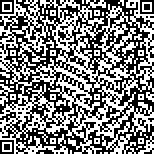刘良乐,刘敏,戴鸣海,汤呈宣,王俊诚,姜刚毅.盆底肌电刺激联合膀胱训练治疗不完全脊髓损伤术后排尿功能障碍的疗效观察[J].中华物理医学与康复杂志,2016,38(11):853-857
扫码阅读全文

|
| 盆底肌电刺激联合膀胱训练治疗不完全脊髓损伤术后排尿功能障碍的疗效观察 |
|
| |
| DOI: |
| 中文关键词: 电刺激 膀胱训练 脊髓 对照研究 |
| 英文关键词: Electrical stimulation Bladder training Spinal cord injury |
| 基金项目:浙江省温州科技计划攻关项目(Y20140149),浙江省瑞安科技发展基金项目(YY2014016) |
|
| 摘要点击次数: 3781 |
| 全文下载次数: 5658 |
| 中文摘要: |
| 目的探讨盆底肌电刺激联合膀胱训练治疗不完全脊髓损伤术后患者排尿功能障碍的疗效。 方法采用随机数字表法将2009年11月至2014年12月期间收治的62例不完全脊髓损伤术后排尿功能障碍患者分为治疗组与对照组,其中对照组(共有患者32例)行常规间歇性导尿,治疗组(共有患者30例)在此基础上增加盆底肌电刺激及膀胱训练。记录所有患者治疗前、后膀胱残余尿量、尿动力学检测指标、拔尿管试验成功率以及治疗15d、30d时尿路感染率,并进行对比分析。 结果所有患者均获得随访,平均随访时间18.5个月。与治疗前比较,2组患者治疗后膀胱残余尿量、最大尿流率或平均尿流率、充盈期末逼尿肌压力等指标均明显改善(均P<0.05);随访终末期时治疗组膀胱残余尿量[(12.34±1.34)ml]、最大尿流率[(19.21±2.41)ml/s]或平均尿流率[(15.35±2.49)ml/s]、充盈期末逼尿肌压力[(32.43±7.65)kPa]等指标均显著优于对照组水平(均P<0.05);治疗组拔尿管成功率(96.7%)显著高于对照组(P<0.05);治疗组平均导尿天数[(18.3±5.6)d]较对照组显著缩短(P<0.05);治疗15d、30d时治疗组尿路感染率(分别为16.7%和6.7%)均显著低于对照组水平(均P<0.05)。 结论盆底肌电刺激结合膀胱训练可显著改善不完全脊髓损伤术后患者排尿功能,减少持续导尿天数,降低尿路感染率,该联合疗法值得临床推广、应用。 |
| 英文摘要: |
| Objective To evaluate the effect of electrical stimulation of the pelvic floor muscles combined with bladder training on urinary dysfunction after incomplete spinal cord injury. MethodsSixty-two incomplete spinal cord injury patients who had received an operation between November 2009 and December 2014 were enrolled and divided randomly into a control group (n=32) and a treatment group (n=30). Both groups were treated with conventional intermittent catheterization, while the treatment group was additionally given electrical stimulation of the pelvic floor muscles combined with bladder training. The residual urine volume was recorded before and after the treatment. Uurodynamic examinations were conducted, and the rate of successful catheter extraction and of urinary tract infection on the 15th and 30th day of treatment, were recorded and analyzed. ResultsAll of the patients were followed-up for an average of 18.5 months. Significant improvement was observed in the residual urine volume, the maximum or average urinary flow rate, and the detrusor pressure at peak flow of both groups. However, at the end of follow-up the treatment group recorded significantly better results on all these measures than the control group. The successful catheter extraction rate of the treatment group (96.7%) was significantly higher than that of the control group and their average number of catheterization days was significantly fewer. The urinary tract infection rates on the 15th and 30th day of treatment were 16.7% and 6.7% in the treatment group, significantly lower than in the control group. ConclusionsElectrical stimulation of the pelvic floor combined with bladder training significantly improves urination function after an operation for incomplete spinal cord injury, decreases the days of catheterization and lowers the rate of urinary tract infection. Such combined therapy is worth promoting in clinical practice. |
|
查看全文
查看/发表评论 下载PDF阅读器 |
| 关闭 |